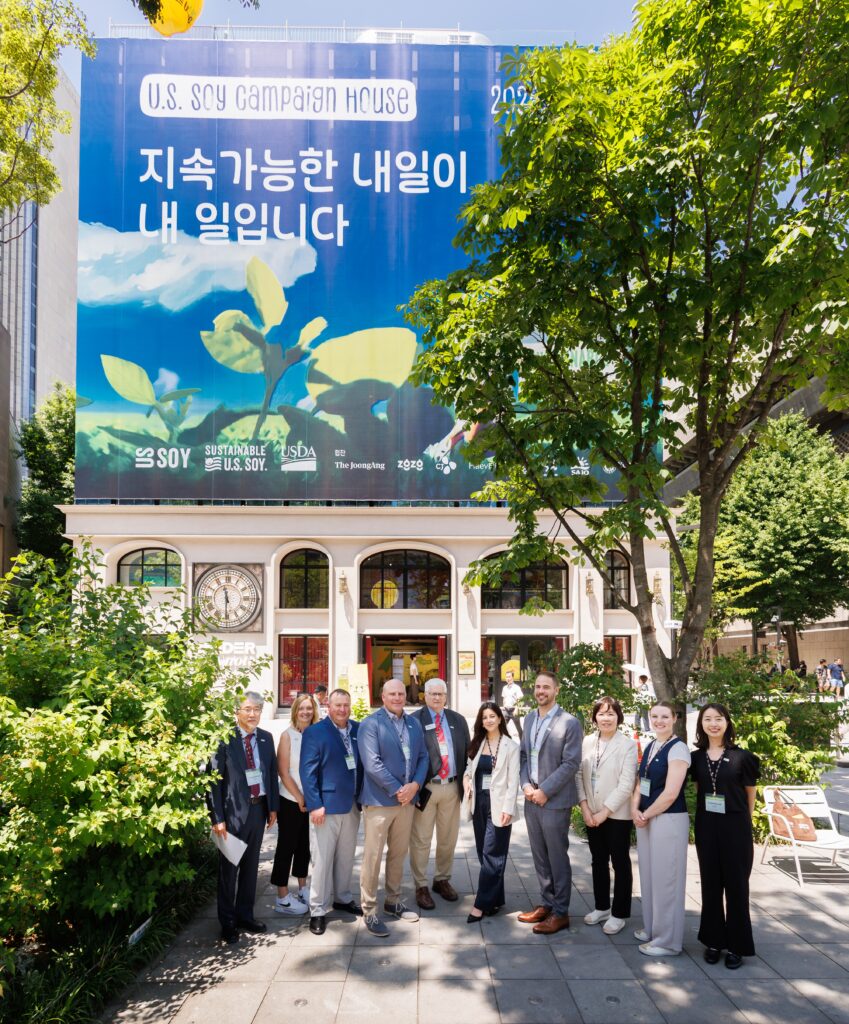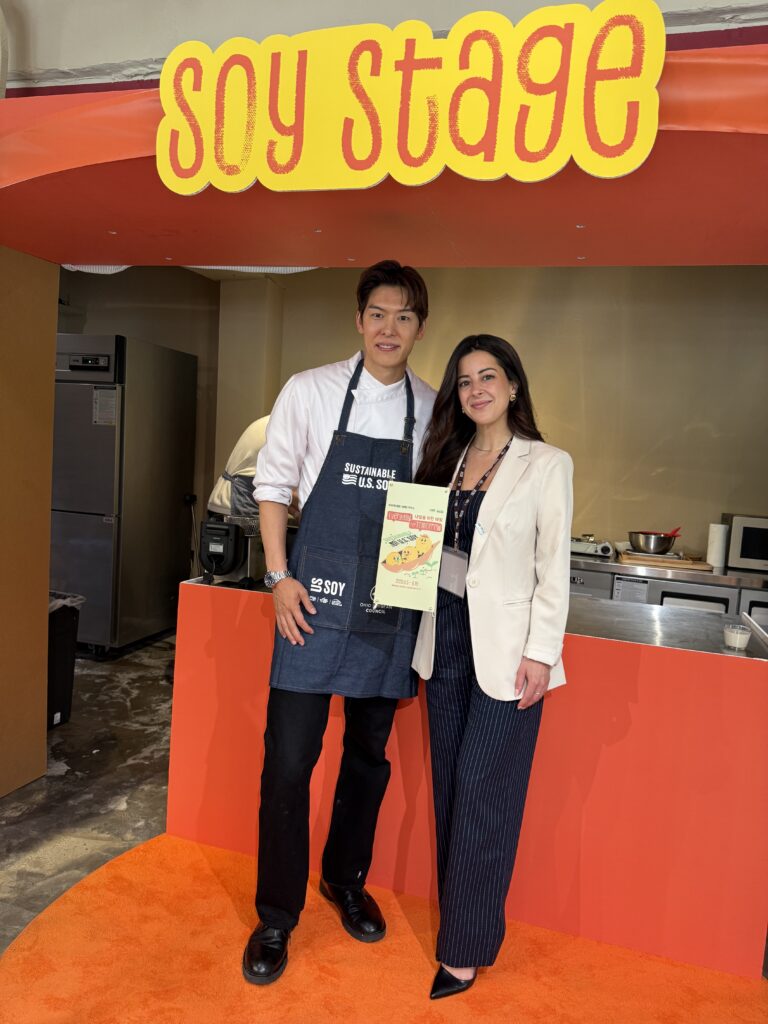
Sharing the Global Power of U.S. Soy in Seoul through Beauty, Wellness and Sustainability
By: Charlotte Martin, MS, RDN
I recently had the privilege of joining the U.S. Soybean Export Council (USSEC) in Seoul, South Korea, for a dynamic event that brought together food, science, sustainability, and beauty in one of the most globally influential markets for soy.
At the heart of the initiative, funded by USDA Regional Agricultural Promotion Program, was the U.S. Soy Campaign House, a full-building takeover on one of Seoul’s busiest streets. For two weeks, the space served as a public-facing hub of activity, inviting visitors to experience the versatility of U.S. Soy firsthand through immersive exhibits, product sampling, educational programming, and curated wellness activations. It was an incredible opportunity to showcase the impact of U.S. Soy, not only on global nutrition but also on skin health, culinary innovation, and sustainable food systems.

As a registered dietitian and content creator with a passion for evidence-based beauty and wellness, I was invited to take part in this campaign in several capacities: presenting scientific insights, engaging with local media and influencers, and documenting the experience for my audiences.
My visit included a presentation to Korean health and beauty influencers on the emerging research on the role of soy isoflavones in skin health and aging. Research suggests these naturally occurring compounds can help support hydration, boost collagen production, and improve elasticity, particularly in postmenopausal women.
I highlighted several peer-reviewed studies during the presentation, including a 2023 randomized controlled trial in which postmenopausal women with Fitzpatrick skin types I-III consumed 30 grams of soy protein daily—containing 50 mg of isoflavones—for 24 weeks. Compared to a control group consuming casein protein (without isoflavones), the soy group saw significant improvements in wrinkle severity, pigmentation, and skin hydration. The takeaway? Small, consistent dietary changes can lead to meaningful improvements in skin health. And in the case of many Koreans—who regularly consume soy from an early age through traditional foods like tofu, soy milk, and fermented soybean pastes—this consistency may already be playing a quiet but powerful role in their overall skin wellness.

I sat down with Allure Korea to discuss new research findings in more depth and explore how soy fits into a broader, food-first approach to skin health. I also spoke with a group of elementary school student journalists, helping them understand the role of soy in health and nutrition—a moment that reminded me how important it is to communicate science in ways that are accessible across ages and cultures.
The Campaign House itself was full of energy. Visitors could sample soy lattes, grab soy-based[PM1] [JB2] cooking kits, and explore interactive exhibits, including one focused on sustainability and global supply chains. It was inspiring to see how seamlessly the campaign connected soy’s everyday culinary appeal with its larger environmental and economic story.

While soy is deeply rooted in Korean cuisine, many don’t realize just how globally connected the supply chain is. In fact, 70–80% of Korea’s imported soybeans for human consumption come from the United States. As someone who advocates for food systems that promote both health and sustainability, it was incredibly meaningful to be part of a campaign that celebrated that connection, bringing together American agriculture and Korean culture in such a thoughtful, forward-looking way.
This article was funded by the USDA Regional Agricultural Promotion Program

Author Bio:
Charlotte Martin, MS, RDN
Charlotte Martin is a nationally recognized dietitian and writer who has made it her mission to educate, inspire, and empower others to shape their eating habits and relationship with food.
Charlotte’s philosophy as a dietitian champions fact over fad. Her evidence-based approach focuses on clearing the noise and teaching flexible, sustainable eating and behavioral habits.